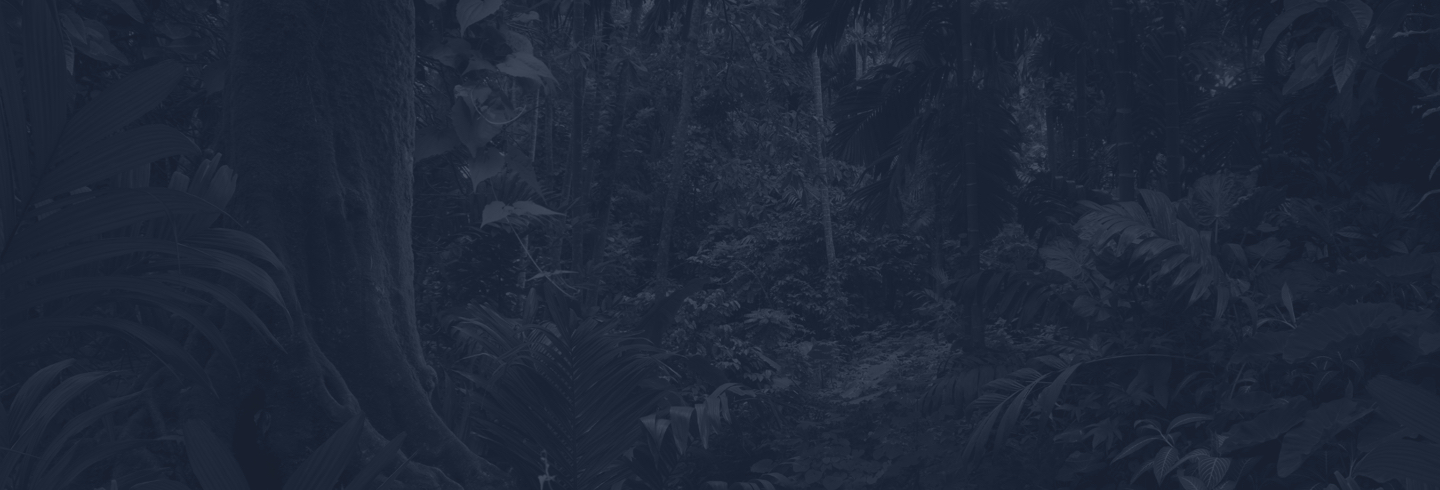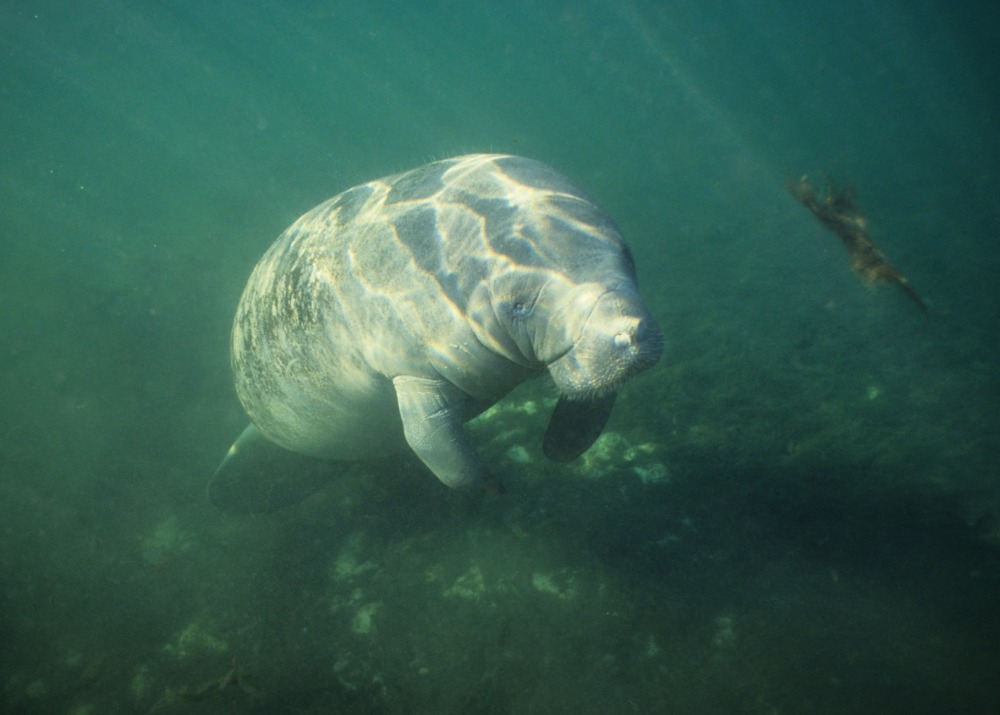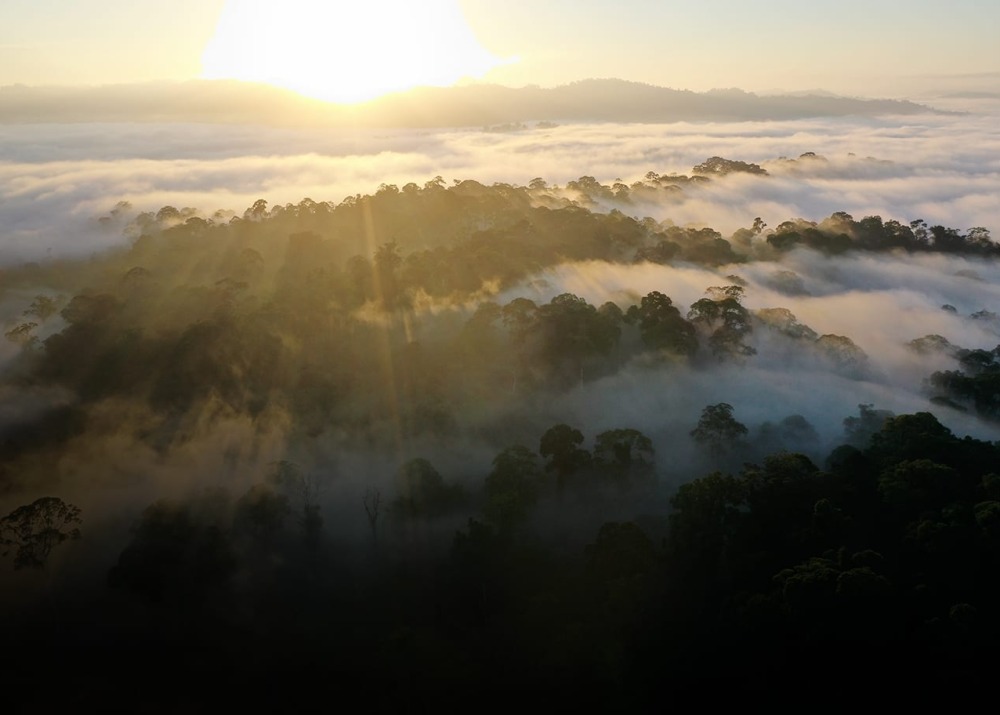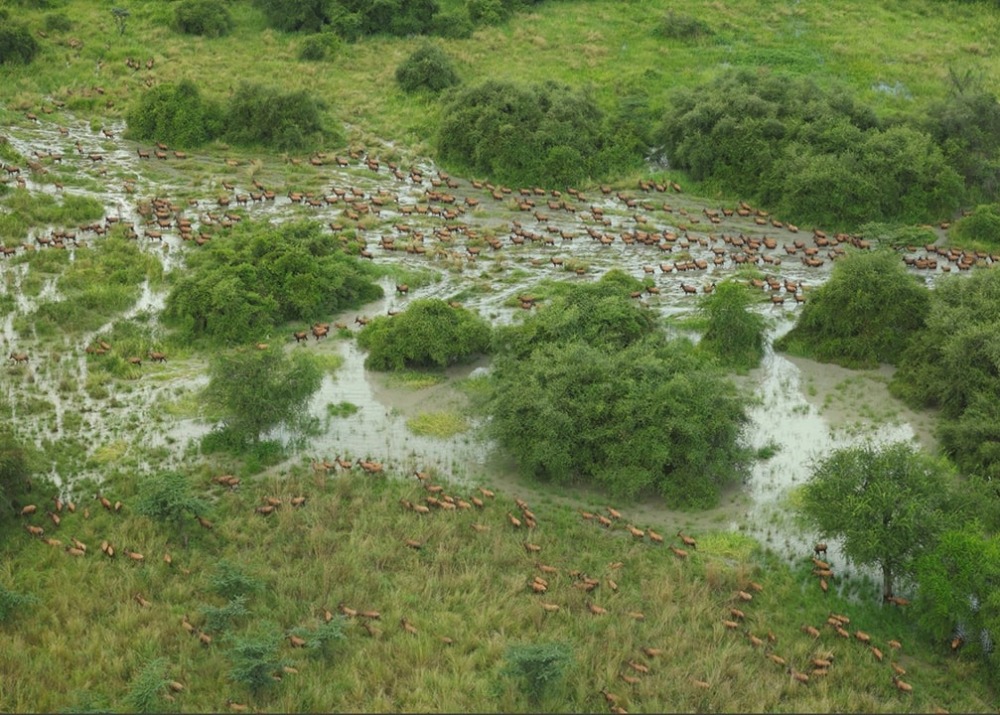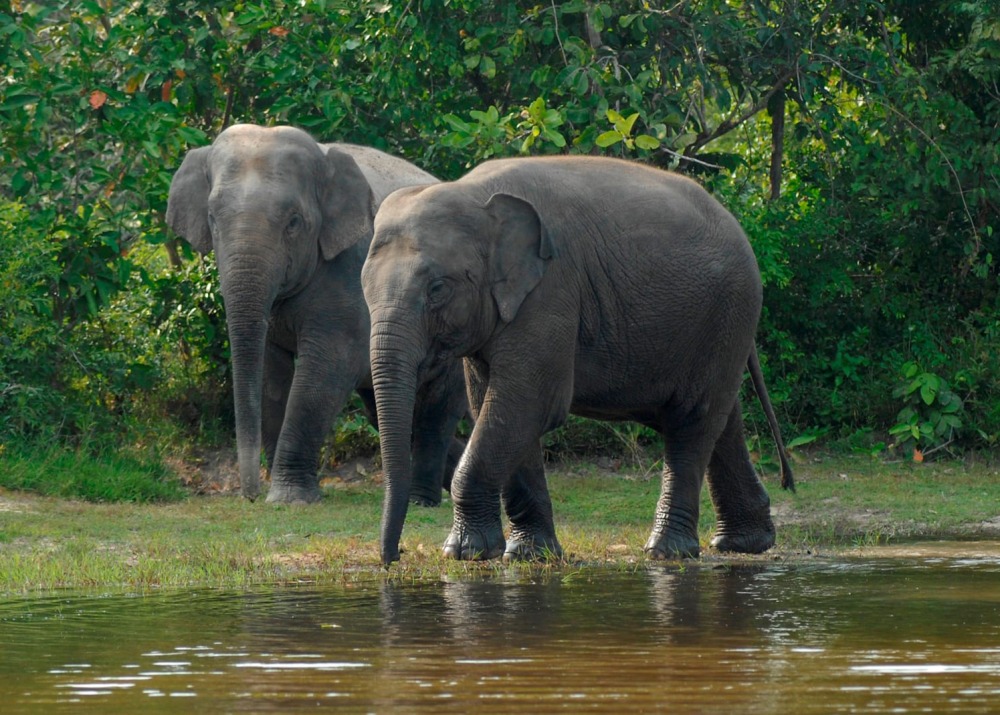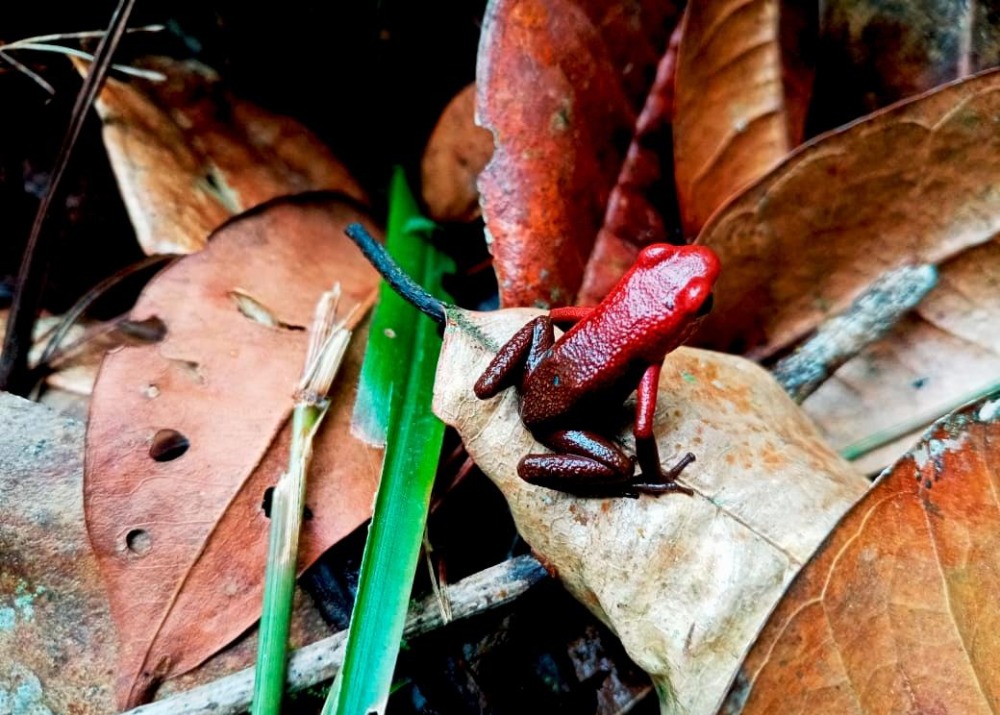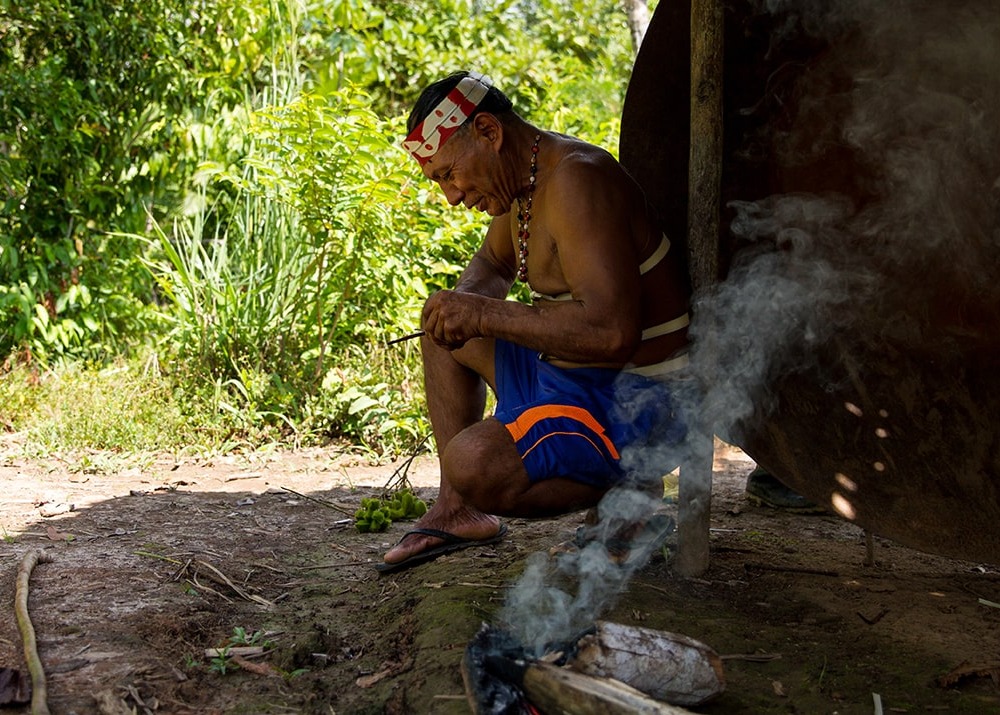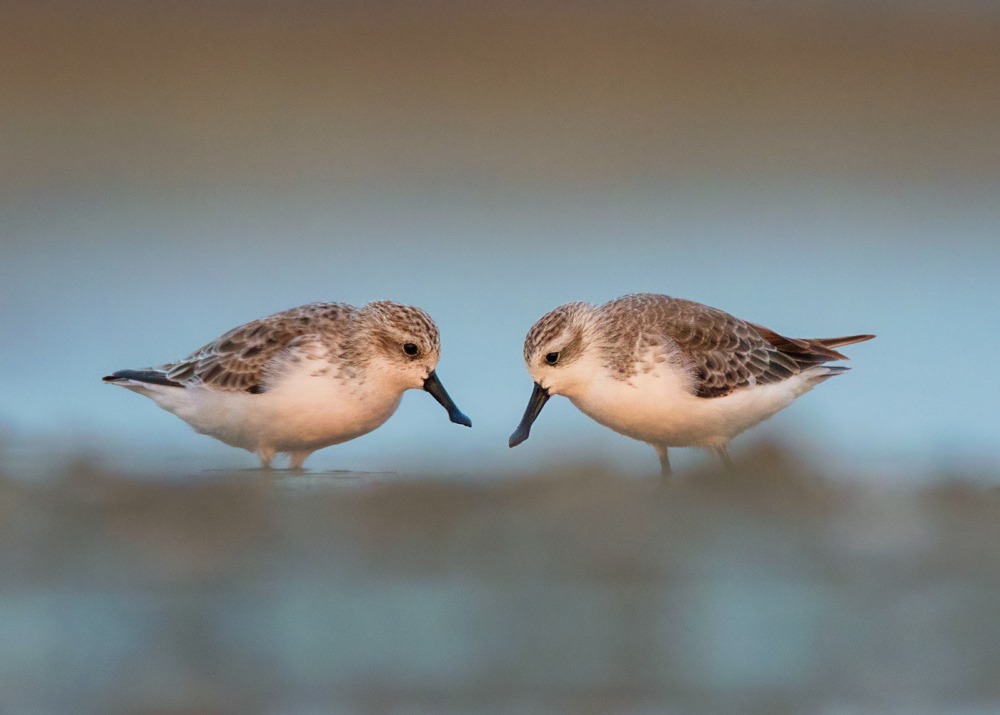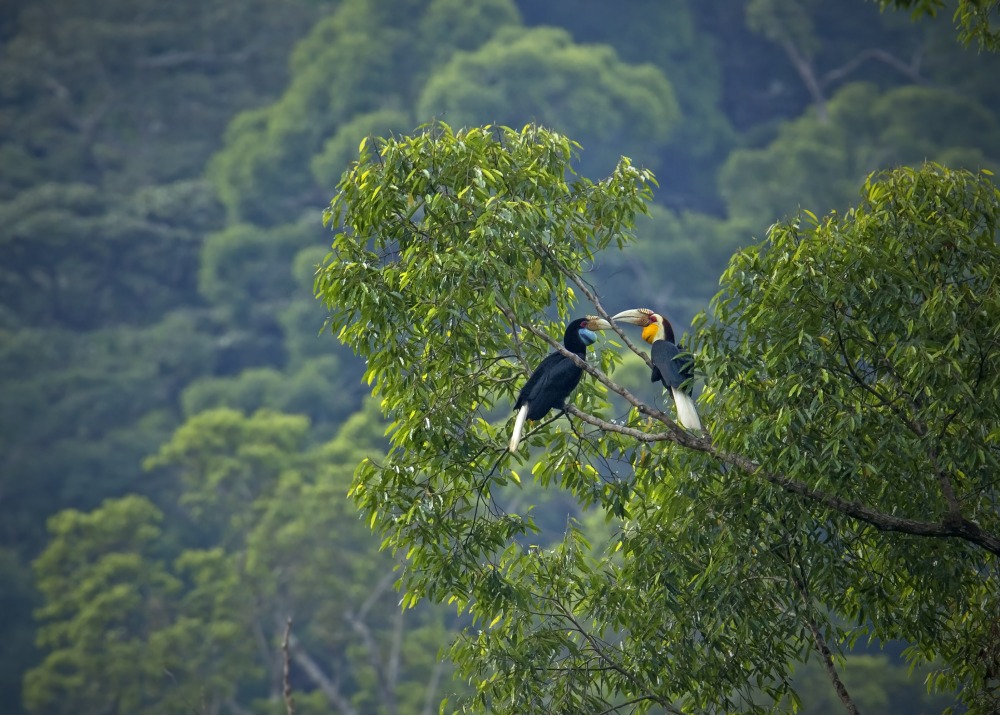Ascend the Volcano: Last Refuge for Four Critically Endangered Birds in Indonesia
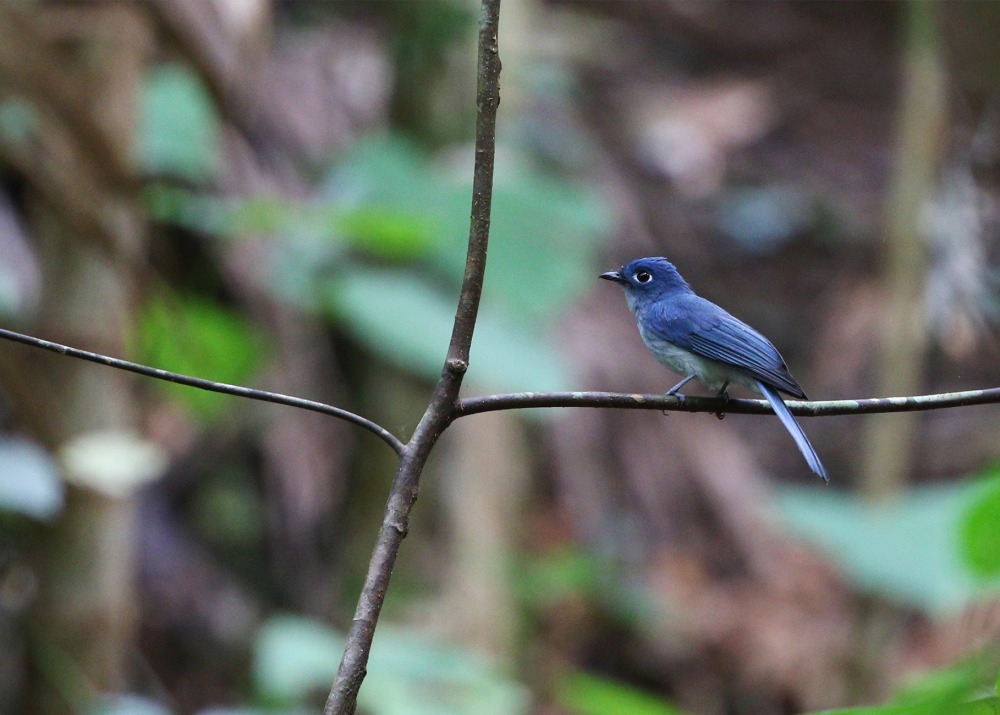
Beginning about 20 million years ago, the crashing of tectonic plates created a chain of small volcanic islands in northeastern Indonesia, just south of the Philippines. Strung along the northern end, the Sangihe (pronounced san-ee-ye) archipelago features active volcanoes that have erupted within the last 100 years, but southern Sangihe island is quiet on that front. Instead of the ominous bubbling, hissing and booming of volcanic activity, one hears—if lucky enough—birdsong.
An inactive “extinct” volcano, Mt. Sahendaruman dominates the southern half of the island, rising to 2,644 feet above sea level. Its forested crater still resonates with the call of rare birds found nowhere else, but without protection, their days could be numbered.
Almost the entire global population of four Critically Endangered birds are restricted to a tiny area of habitat of less than 2,000 acres within the crater and on the external slopes—the Sangihe Whistler, Sangihe White-eye, Cerulean Flycatcher and Sangihe Golden Bulbul. They were only recently rediscovered about 30 years ago after expeditions were undertaken to find them. They are nearly extinct because more than 99% of Sangihe’s original forest has been replaced by coconut, pepper, nutmeg and clove plantations, some dating back to the 1600s. The continuing spread of agriculture is fragmenting what little is left.
These four birds embody the theory of “geographic insularity”—they have existed on Sangihe Island isolated and apart and have no way of expanding their range. This phenomenon was developed as part of the “Theory of Island Biogeography,” in the famous book of the same name by renowned American biologist Dr. E.O. Wilson—a brilliant and beloved member of Rainforest Trust’s board until his death in 2021—and his colleague, Robert MacArthur. It is a major tenet of modern conservation that explains the how and the why of unique biodiversity on islands and a great deal more.
Dr. Nigel Collar, a member of Rainforest Trust’s Advisory Council, has written over 100 scientific papers and 12 books including Facing Extinction: The World’s Rarest Birds and the Race to Save Them. In 2022, he co-authored a study of the Sangihe birds’ habitats. Recently, he described these extraordinary birds as “relics of an ancient world who became stranded on these little islands and survived.”
“The most important single thing that can be said about a small population of a species is that we must make it bigger.”
– Dr. Nigel Collar
How did they get there? Where else did they exist, and for how long? The answers are lost in the mists of history. What is extraordinary is that they are still present on Sangihe island—just barely. Dr. Collar reminds us of the risks when he says, “The most important single thing that can be said about a small population of a species is that we must make it bigger.”
Hope for these birds is tied to the intact fragments of forest on the rugged, mountainous slopes that have not yet been leveled to grow coconut and spices, with their full canopy cover of large trees, climbing plants and palm-like shrubs. But as land runs out, these higher areas will also be breached.
Rainforest Trust is working with local partner Burung Indonesia to save the critically endangered birds and the other species that share this landscape. In collaboration with the government of Indonesia, the project supports the declaration of 7,756 acres on Mt. Sahendaruman as an Area of High Biodiversity Value recognized by the government of Indonesia. Another estimated 494 acres will be designated Village Forests.
Once the birds’ habitat is protected with a generous buffer around it, the threats of agriculture and mining will be held at bay. Regular monitoring of bird populations will keep a close eye on their status, and local communities will increasingly celebrate the uniqueness and importance of these exceptional birds.
Rare birds more precious than gold
The entire range of the threatened birds overlaps with a nearly 104,000-acre gold mining concession on Mt. Sahendaruman. A court ruled in January 2023 that the environmental permit issued to the company was invalid and local authorities were ordered to revoke the license because proper procedures had not been followed and the environmental impact analysis was deemed inadequate. The Supreme Court of Indonesia ruled that the law against mining on “small islands” like Sangihe was breached by the permit.
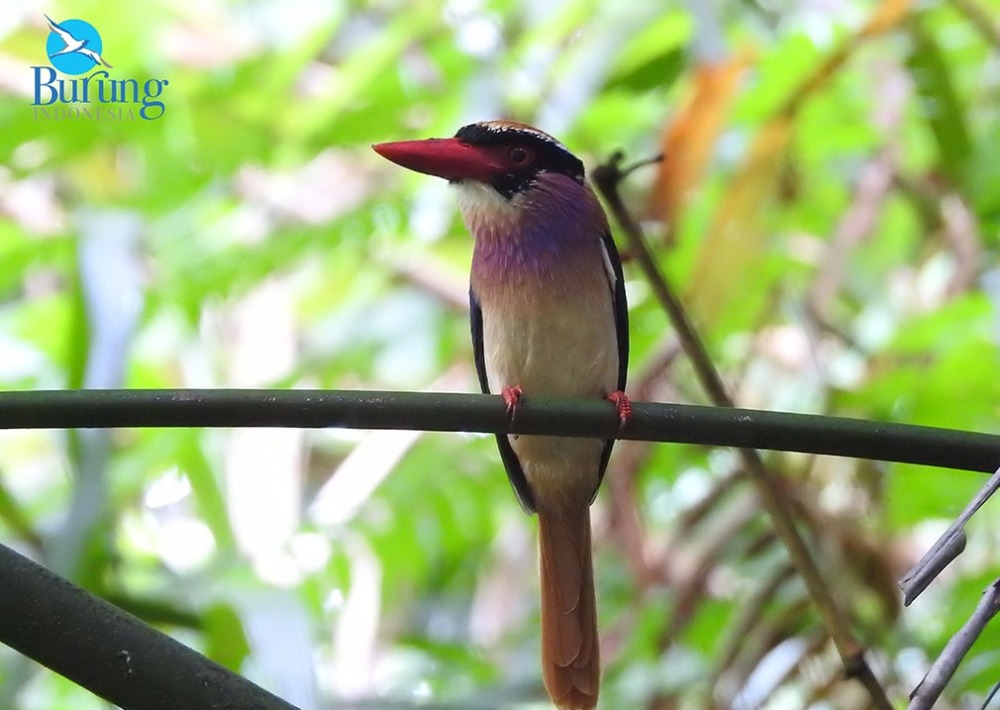
Sangihe Lilac Kingfisher, photo courtesy Burung Indonesia and BirdLife International
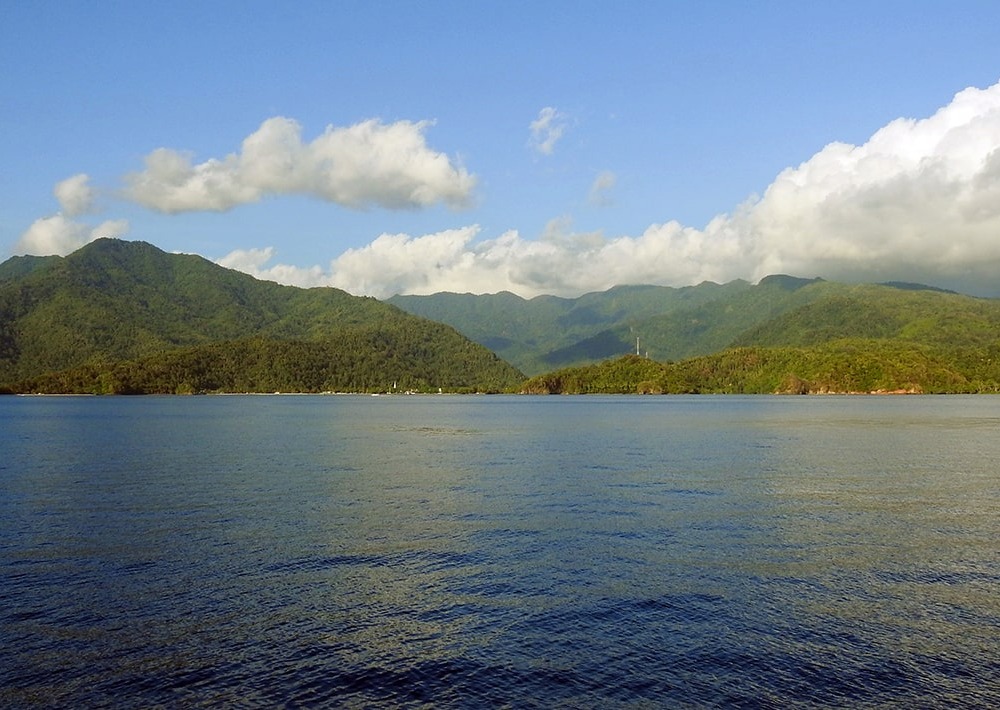
Landscape of Mt Sahendaruman, photo courtesy Burung Indonesia and BirdLife International
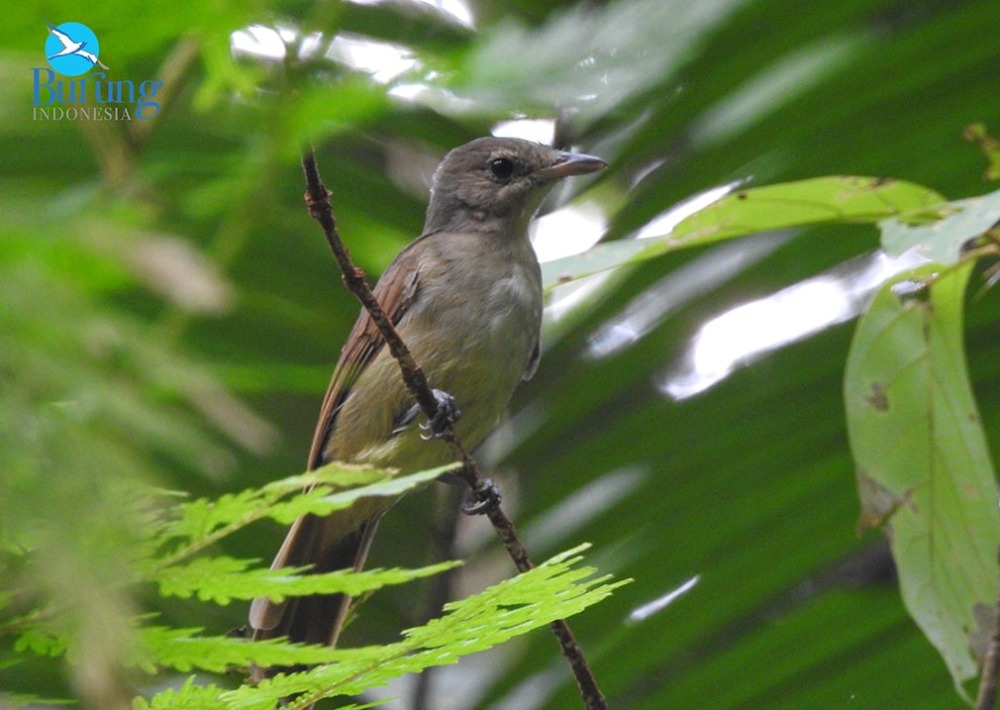
Sangihe Whistler, photo courtesy Burung Indonesia and BirdLife International
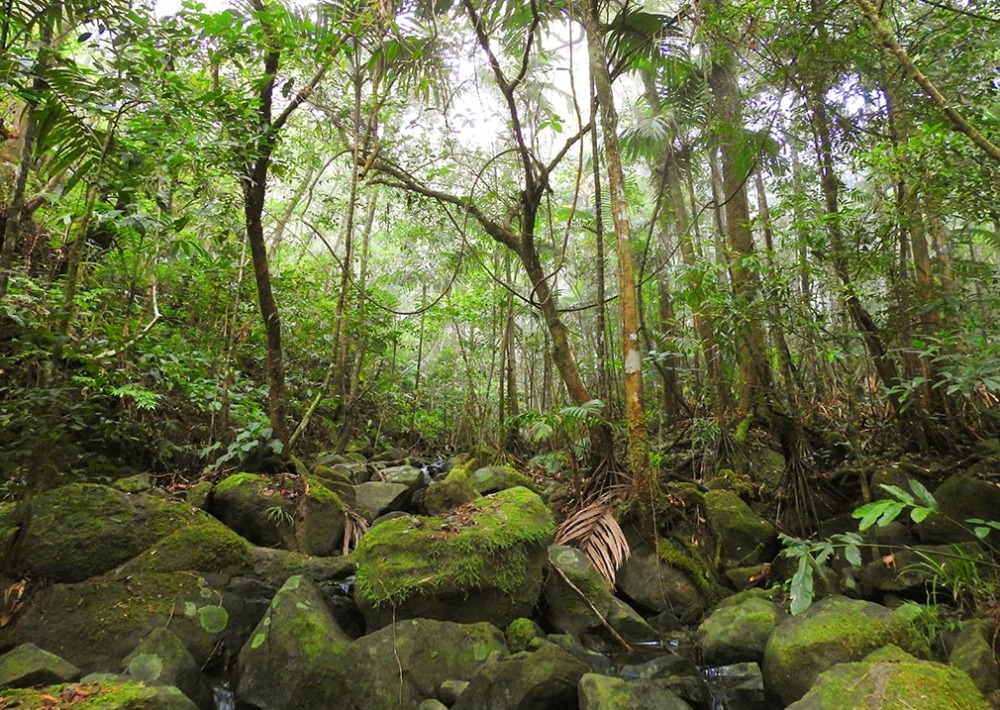
One of the valleys in Kulur Village, photo courtesy Burung Indonesia and BirdLife International
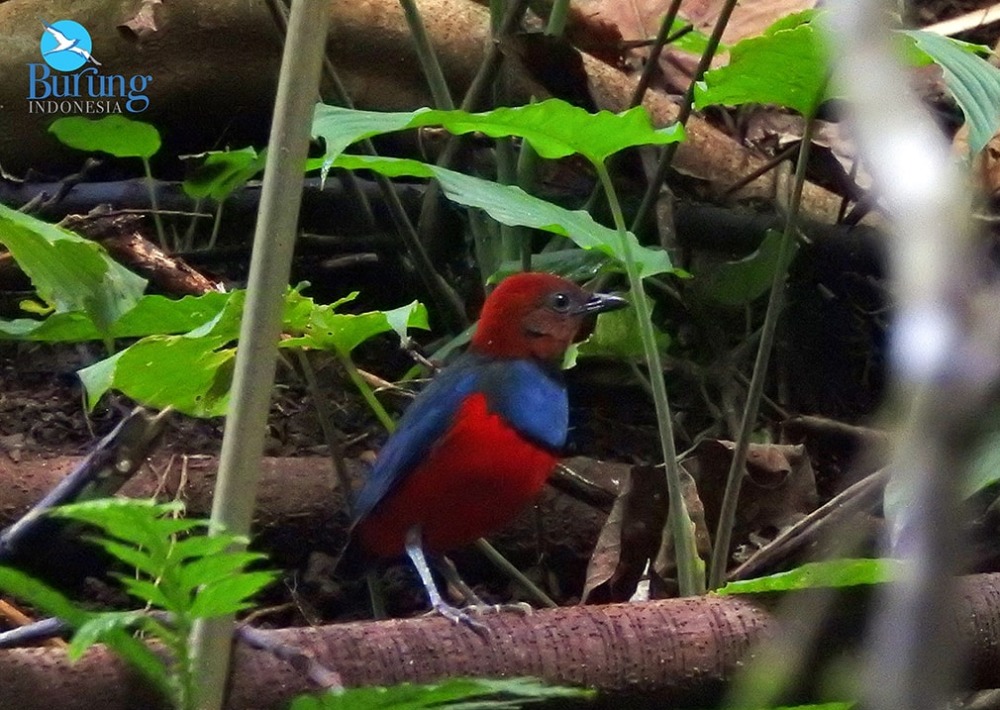
Sangihe Pitta, photo courtesy Burung Indonesia and BirdLife International
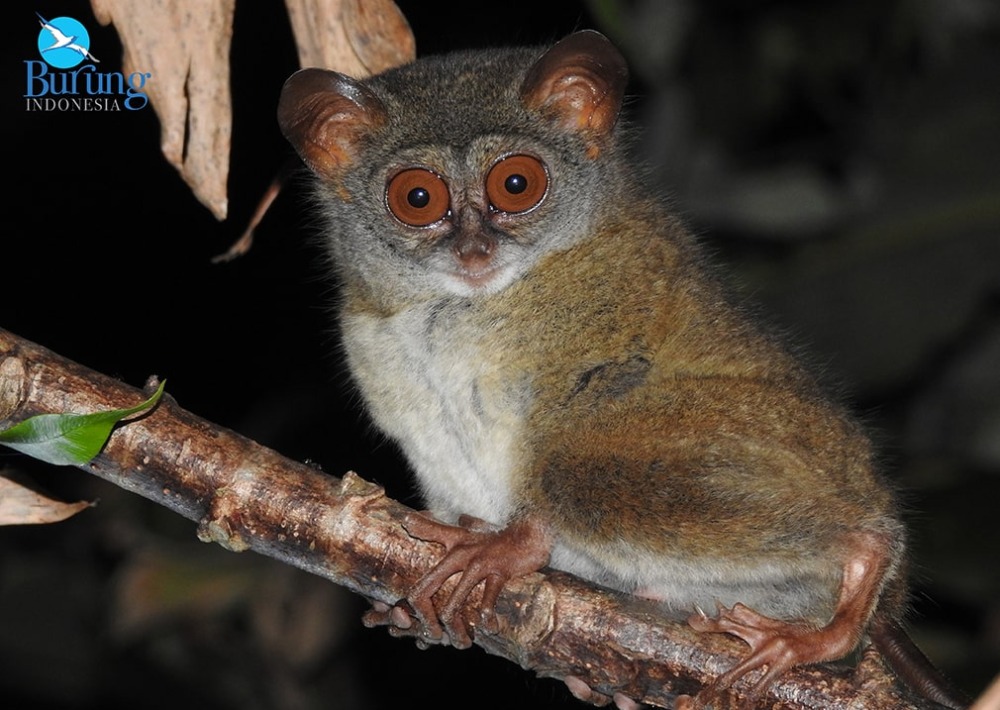
Sangihe Tarsier, photo courtesy Burung Indonesia and BirdLife International
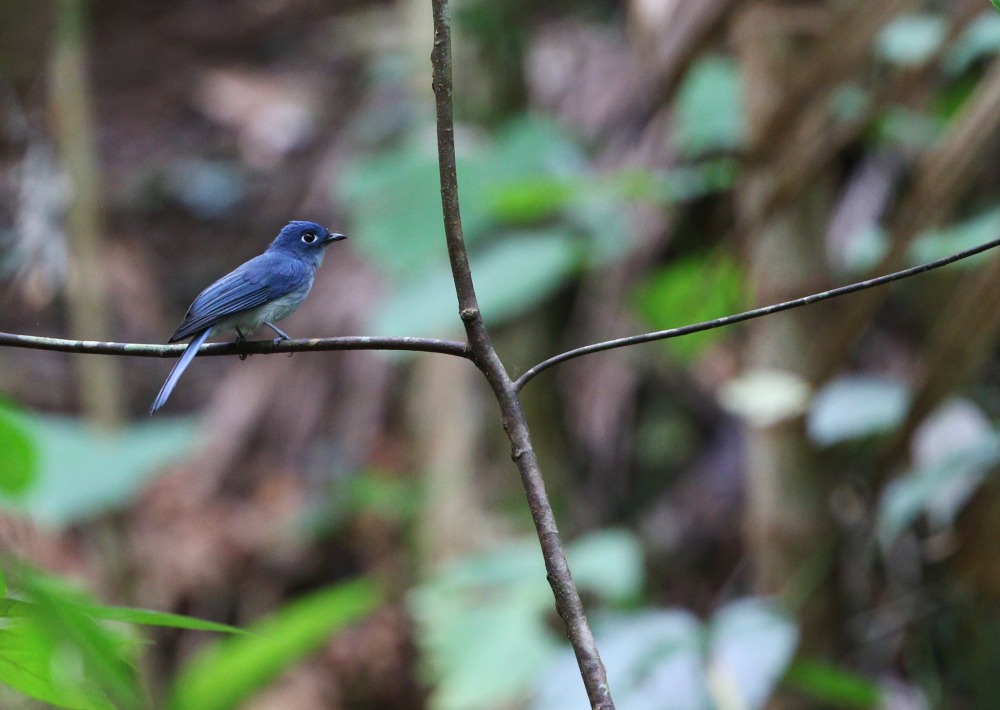
Cerulean Flycatcher, by Agami Photo Agency
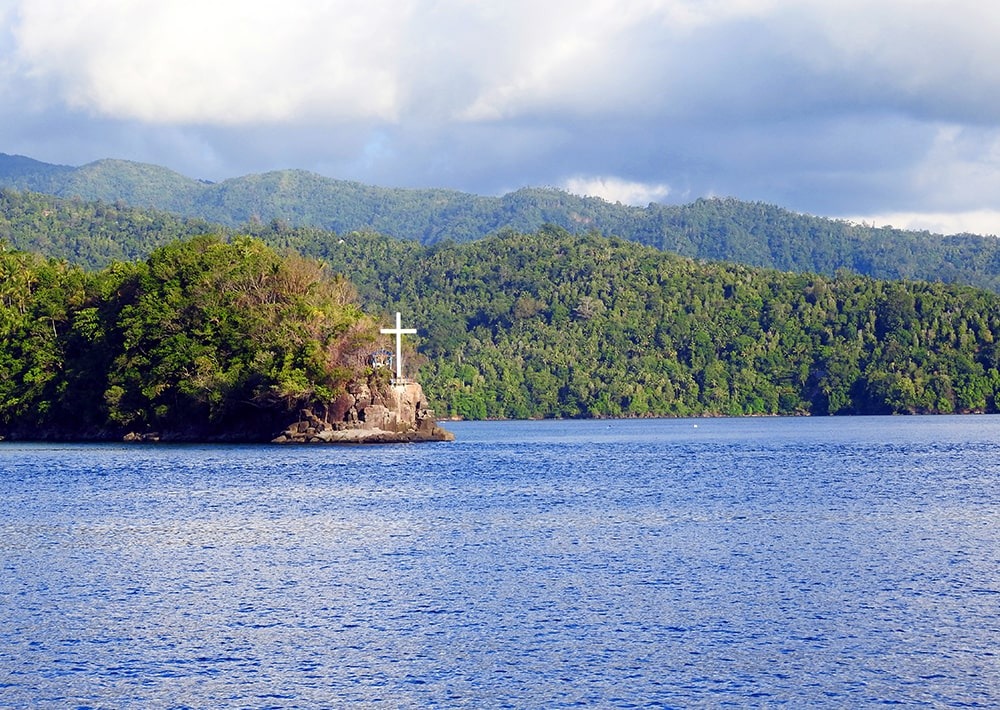
West part of Mt. Sahendaruman, photo courtesy Burung Indonesia and BirdLife International
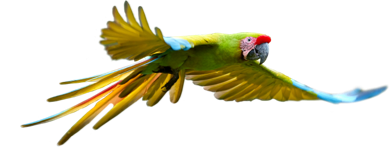
Sign up to receive the latest updates
"*" indicates required fields

